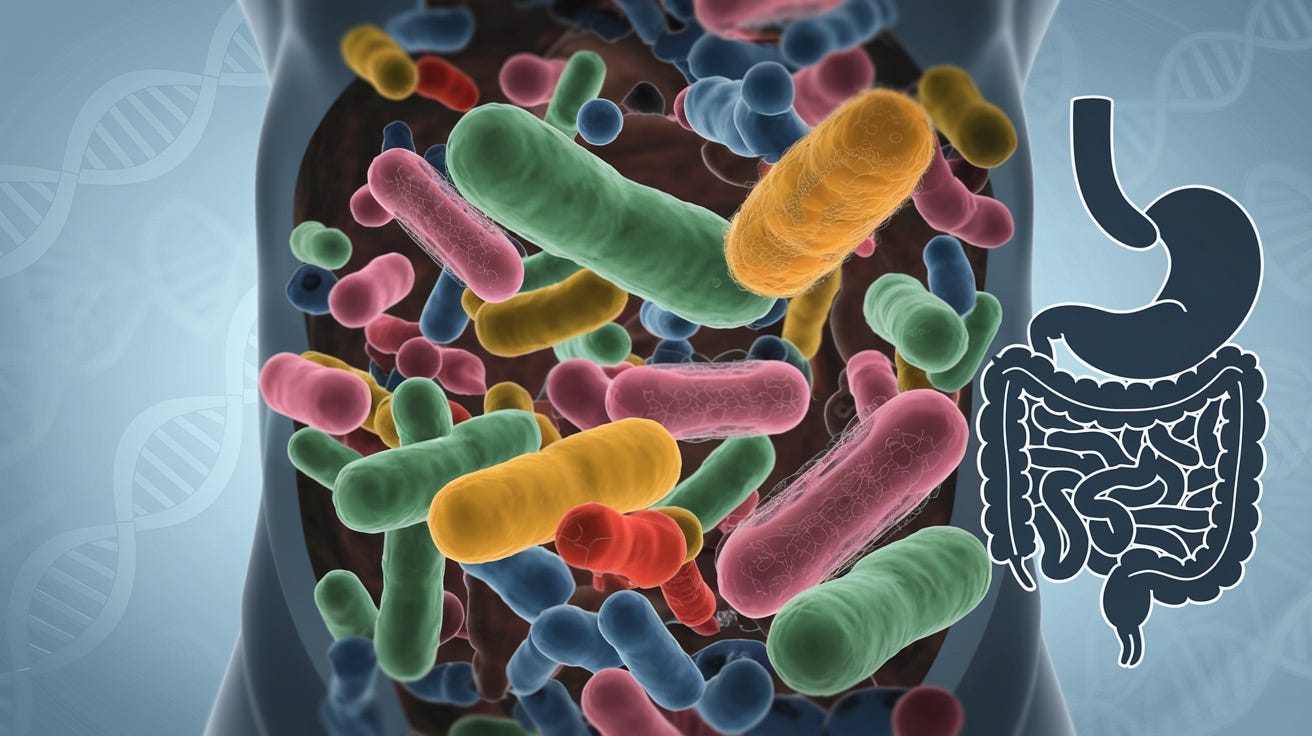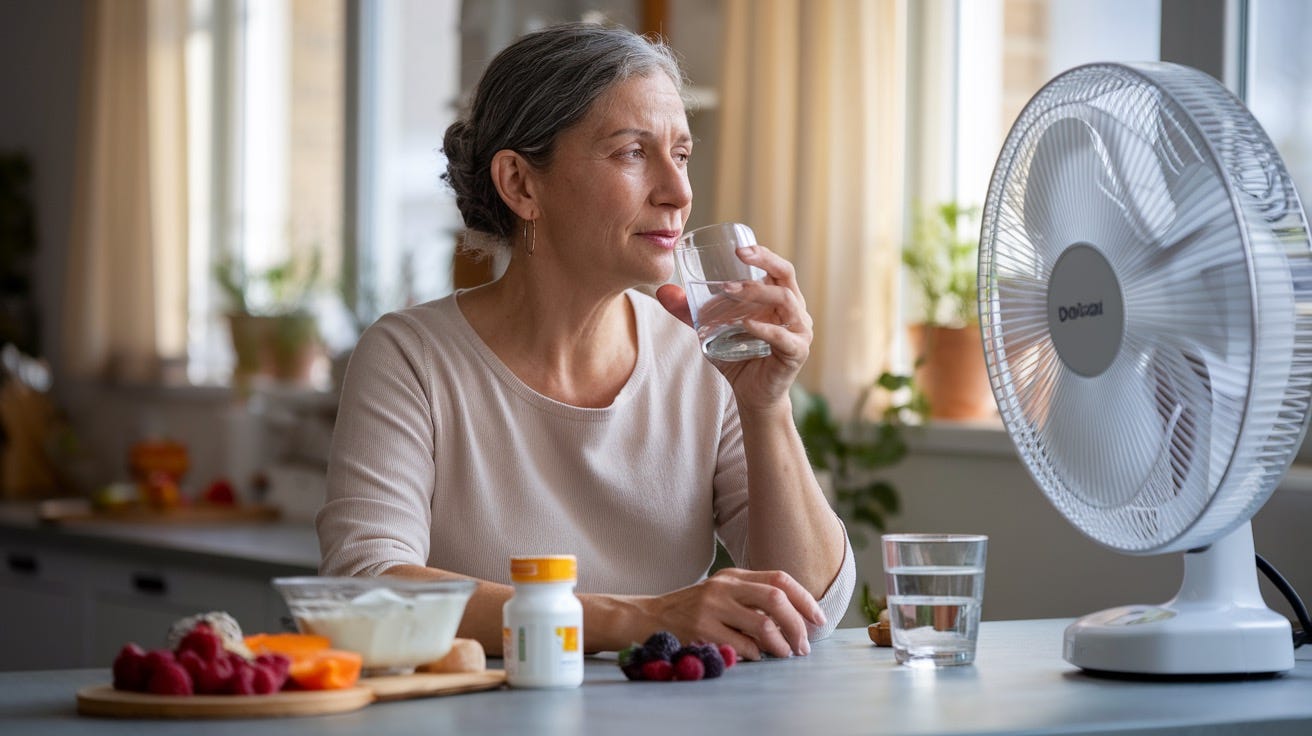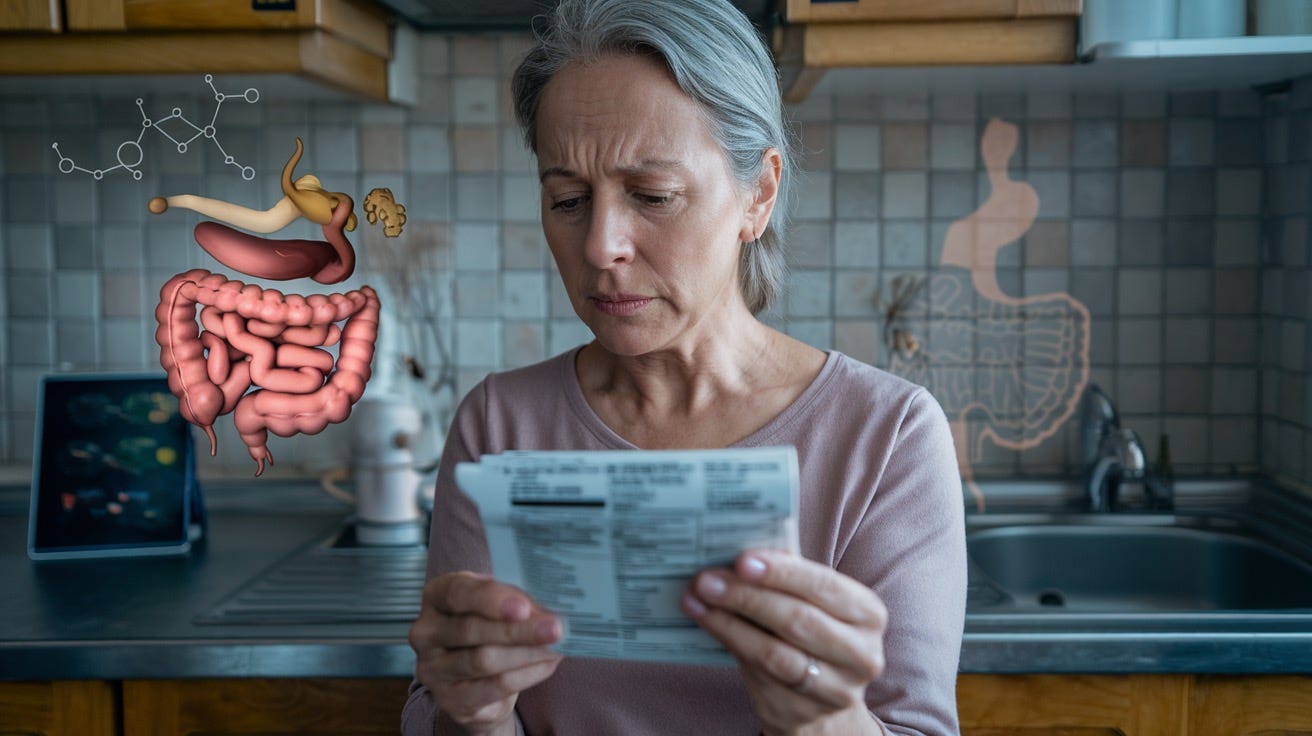The human body harbours trillions of microorganisms that form complex ecosystems throughout various body sites. While the gut microbiome has gained significant attention for its role in digestion and immunity, emerging research reveals a fascinating and important relationship between these microscopic communities and women’s hormonal health. At the centre of this lies oestrogen, a hormone whose influence extends beyond reproduction to impact metabolism, cardiovascular health, and bone density.
The Oestrogen-Microbiome Connection
Oestrogen is an important hormone for both men and women. It is primarily produced in the ovaries or testes, adrenal glands, and adipose tissue. Oestrogen does not simply circulate once through the body before being eliminated. Instead, it participates in a recycling system that depends heavily on the gut microbiome. This process, known as enterohepatic recycling, represents one of nature’s examples of how our microbial partners actively participate in hormone regulation.
After completing its roles in the body oestrogen is processed by the liver through conjugation with sulfate or glucuronic acid, rendering it inactive. These conjugated oestrogens are released into bile and transported to the intestine, where they meet the estrobolome, a collection of gut bacteria capable of producing the enzyme beta-glucuronidase.
Beta‑glucuronidase acts like a molecular “unlocking” tool: it removes the conjugating group and reactivates the estrogen molecules. These free estrogens can then cross the gut lining, re-enter the bloodstream via the portal vein, and exert their effects anew. Radiolabeling studies reveal that this recycling pathway returns roughly 65% of estradiol (E2), 48% of estrone (E1), and 23% of estriol (E3) to circulation. E2 is the most biologically active oestrogen.
This enterohepatic recycling is a delicate balance. Insufficient reactivation can contribute to oestrogen deficiency, whereas excessive beta‑glucuronidase activity may lead to oestrogen dominance, a condition linked to increased risks of endometriosis, uterine fibroids, and oestrogen-sensitive cancers.
The Estrobolome
The term “estrobolome” encompasses the collection of bacterial genes capable of deconjugating oestrogens. Over 60 bacterial genera in the human intestinal tract encode beta-glucuronidase and related enzymes. The Human Microbiome Project has identified approximately 279 beta-glucuronidase genes in the human intestine, with the majority belonging to two major bacterial phyla: Bacteroidetes (52%), Firmicutes (43%), Verrucomicrobia (1.5%) and Proteobacteria (0.5%).
Gut Microbiome Remodeling in Menopause
As women transition into menopause, profound hormonal shifts trigger significant reorganisation of the gut microbiome. Research consistently shows a decline in microbial diversity after menopause, with gut profiles increasingly resembling those seen in men due to loss of oestrogen-driven microbial selection. Advanced metagenomic analyses reveal that specific functional capabilities are altered: β‑glucuronidase enzyme activity, integral to oestrogen recycling, declines markedly, while pathways such as sulfate transport become more prominent.
Taxonomically, key bacteria such as Akkermansia muciniphila, Odoribacter, and Bilophila shift in abundance. A. muciniphila, which normally participates in mucin degradation and harbours β‑glucuronidase genes, is depleted in postmenopausal women. These gut changes likely contribute to menopause-associated metabolic shifts, inflammation, and increased cardiometabolic risk.
Beyond broad functional changes, targeted metagenomic profiling, examining specific genes such as those encoding beta- beta-glucuronidase, has reinforced the link between estrobolome activity and oestrogen status. Lower enzyme activity translates to reduced enterohepatic recycling, further decreasing systemic oestrogen levels. Together, these shifts, phylogenetic, functional, and enzymatic, reaffirm menopause as a microbially mediated endocrine event, not merely a hormonal one.
Key Bacteria Involved in Oestrogen Regulation
Several bacterial genera are particularly effective at regulating oestrogen levels due to their enzymatic activity.
Shifts in Bacterial Composition: There is an observed increase in certain bacteria such as Bacteroides, Roseburia, and Lachnospira, alongside decreased abundance of bacteria like Bilophila, Prevotella, and Parabacteroides.
Lactobacillus: Known for its probiotic properties, this genus influences oestrogen metabolism and is commonly found in fermented foods.
Bifidobacterium: Associated with various health benefits, it plays a significant role in modulating oestrogen levels.
Bacteroides: Certain species within this genus help deconjugate oestrogens, thereby increasing their bioavailability.
Clostridium: Members of this genus express beta-glucuronidase, contributing to oestrogen metabolism.
Enterococcus: This genus has been identified as having beta-glucuronidase activity that aids in regulating oestrogen levels.
Escherichia coli: Some strains possess genes encoding beta-glucuronidase involved in oestrogen metabolism.
Ruminococcus: Implicated in the modulation of oestrogen levels through metabolic functions.
The functional importance of these bacteria extends beyond mere presence. Research has demonstrated that faecal beta-glucuronidase activity correlates positively with urinary oestrone levels and inversely with faecal total oestrogens, providing evidence of this bacterial community’s role in hormone recycling. This relationship suggests that the composition and activity of the estrobolome directly influence circulating oestrogen levels in women.
Sexual Dimorphism: When Hormones Shape Microbial Communities
The relationship between sex hormones and the microbiome is not unidirectional. Just as bacteria influence hormone levels, hormones also shape microbial communities, contributing to the observed differences in gut microbiome composition between men and women. This sexual dimorphism in the microbiome becomes particularly apparent after puberty, coinciding with the dramatic hormonal changes that occur during adolescence.
Studies in both mice and humans support this hormone-microbiome interaction. In animal models, differences in gut microbiome diversity between sexes emerge after puberty, suggesting that the surge in sex hormones during this developmental period influences microbial community structure. Human studies have provided additional evidence, showing that the gut microbiome composition of postmenopausal women, who have significantly lower oestrogen levels, more closely resembles that of men compared to premenopausal women.
Menopause: A Hormonal Shift with Microbial Consequences
Menopause represents one of the most dramatic hormonal transitions in a woman’s life, characterised by a precipitous decline in ovarian hormone production. This hormonal shift does not occur in isolation, it triggers changes throughout the body, including significant alterations in microbial communities across multiple body sites.
The impact of menopause on the gut microbiome is both profound and multifaceted. While some studies have found minimal differences at the broad phylum level between pre- and postmenopausal women, more detailed analyses using advanced sequencing techniques reveal significant changes in specific bacterial genera and functional capabilities.
Postmenopausal women show increases in certain bacterial genera, including Odoribacter and Bilophila, while experiencing depletion of others. Perhaps most significantly, the abundance of bacterial beta-glucuronidase, the key enzyme in oestrogen recycling, is significantly lower in postmenopausal women compared to their premenopausal counterparts.
One particularly notable change involves Akkermansia muciniphila, a beneficial bacterium known for its metabolic health benefits. This species, which expresses beta-glucuronidase and aryl-sulfatase enzymes, becomes depleted in postmenopausal women. Interestingly, in this population, A. muciniphila levels show positive associations with estrobolome-related genes and progestin steroid metabolites, suggesting its continued importance in hormone metabolism even when oestrogen levels are low.
These gut changes likely contribute to menopause-associated metabolic shifts, inflammation, and increased cardiometabolic risk.
Beyond broad functional changes, targeted metagenomic profiling, examining specific genes such as those encoding beta- beta-glucuronidase, has reinforced the link between estrobolome activity and oestrogen status. Lower enzyme activity translates to reduced enterohepatic recycling, further decreasing systemic oestrogen levels. Together, these shifts, phylogenetic, functional, and enzymatic, reaffirm menopause as a microbially mediated endocrine event, not merely a hormonal one.
Beyond the Gut: Oral and Vaginal Microbiome Changes
The hormonal changes of menopause extend their influence beyond the gut to other body sites that harbour oestrogen receptors, including the oral cavity and vagina.
Oral Microbiome Shifts
The oral cavity contains oestrogen receptors in both the gingiva and salivary glands, making it susceptible to hormonal fluctuations. Oral tissues rely on oestrogen to maintain immune function and microbial balance During menopause, changes in saliva production and composition can alter the oral microbial environment. These shifts may contribute to increased susceptibility to periodontal disease, as specific pathogenic bacteria may gain advantages in the altered oral ecosystem. Notably, the oral microbiome also contains beta-glucuronidases, though these differ from their gut counterparts in their specific activities and targets.
Vaginal Microbiome Transformation
Perhaps nowhere are the effects of menopausal hormone changes more pronounced than in the vaginal microbiome. The decline in oestrogen leads to decreased glycogen levels in the vaginal epithelium, reduced moisture, and increased pH, creating an environment less favourable for the Lactobacillus species that typically dominate the premenopausal vaginal microbiome, and favourable to opportunistic species such as Gardnerella, Escherichia coli, Candida, and Prevotella.
The reduction in these beneficial bacteria post-menopause can increase susceptibility to urogenital infections and may affect urinary tract health through interconnections between the vaginal, urinary, and gastrointestinal microbial ecosystems.
Numerous studies document the resultant decline in Lactobacillus populations and increased microbial diversity in postmenopausal vaginal microbiota. This dysbiotic shift is associated with genitourinary syndrome of menopause (GSM), which includes symptoms such as vaginal dryness, itching, dyspareunia, and heightened risk of bacterial vaginosis (BV) and urinary tract infections. Low-dose oestrogen therapy can restore Lactobacillus dominance, decreased vaginal pH, reduced Gardnerella levels, and improved symptoms of atrophic vaginitis within weeks. These findings affirm that hormonal replenishment reverses both structural and microbial components of GSM.
Health Implications: When the Microbiome-Hormone Axis Goes Awry
The intricate relationship between the microbiome and female hormones has profound implications for health and disease. Disruptions in this delicate balance have been linked to various conditions, highlighting the importance of maintaining a healthy microbiome throughout a woman’s life.
Oestogen-Related Disorders
The decline in estrobolome activity during menopause can influence risk profiles for oestrogen-sensitive conditions. Reduced recycling lowers oestrogen levels, which may mitigate breast, endometrial, and colorectal cancer risk, but chronically low oestrogen can accelerate bone loss, cardiovascular decline, skin ageing, and cognitive changes. Conversely, dysbiosis-related increases in deconjugation activity, particularly in premenopausal stages or in the presence of gmGUS-rich microbiota, may elevate systemic oestrogen exposure and augment oestrogen-dependent disease risk.
Oral and Vaginal Health
Oral dysbiosis post-menopause may exacerbate periodontal disease, caries, and oral candidiasis, complicating nutrition and systemic health in ageing women. In the vagina, diminished Lactobacillus protection and higher pH significantly increase vulnerability to BV, urinary infections, and discomfort, highlighting the need to monitor and manage GSM proactively.
Metabolic and Cardiovascular Risks
Microbiome remodeling may mediate menopause-related metabolic changes. Reduced microbial diversity, altered short-chain fatty acid (SCFA) production, and shifts in taxa like Akkermansia may contribute to weight gain, insulin resistance, inflammation, and cardiovascular risk. Early-stage studies imply that maintaining microbial robustness could buffer against the metabolic liabilities of menopause.
Abnormalities in oestrogen metabolism mediated by gut bacteria have been implicated in several oestrogen-related conditions, including breast cancer and menopausal syndrome. The mechanism appears to centre on alterations in the estrobolome that either increase or decrease the recycling of active oestrogens, leading to hormone levels that are either too high or too low for optimal health.
Functional Changes Beyond Species Composition
Modern metagenomic analysis has revealed that menopause affects not just which bacteria are present, but also what they are capable of doing. Specific functional modules related to pathogenic bacterial secretion systems become depleted in postmenopausal women, while sulfate transport systems become enriched. These functional shifts may have important implications for overall health and disease susceptibility.
Therapeutic Horizons: Targeting the Microbiome for Women’s Health
The growing understanding of the microbiome-hormone axis opens exciting possibilities for therapeutic interventions. Rather than simply replacing hormones or treating symptoms, targeting the microbial communities that influence hormone metabolism offers a more foundational approach to women’s health.
Microbiome-Based Therapeutics
Probiotics
Targeted probiotics, such as specific Lactobacillus, Bifidobacterium, and Akkermansia strains, can help restore estrobolome function or vaginal microbial balance. While oral probiotics have shown promise for gut and vaginal health, their efficacy depends heavily on strain selection, dosage, and timing relative to hormonal status. Prebiotics such as dietary fibre and resistant starches may selectively nurture beneficial gut microbiome members, enhancing oestrogen recycling and mitigating postmenopausal oestrogen deficiency.
Dietary Interventions
In addition to phytoestrogens and dietary fibre, several other compounds play a crucial role in supporting a healthy estrobolome throughout a woman’s life. Polyphenols, found in foods like berries, green tea, olive oil, and dark chocolate, act as prebiotics and antioxidants, enhancing microbial diversity and reducing inflammation.
Omega-3 fatty acids from sources such as fatty fish, flaxseeds, and walnuts also help by lowering inflammation and supporting a balanced gut environment.
Fermented foods like yogurt, kefir, sauerkraut, and kimchi introduce beneficial probiotics that influence oestrogen metabolism and gut health.
Prebiotics, found in garlic, onions, leeks, asparagus, and bananas, nourish beneficial gut bacteria like Lactobacillus and Bifidobacterium.
Lignans, especially abundant in flaxseeds and also present in sesame seeds, whole grains, and legumes, are converted by gut bacteria into compounds with weak oestrogen-like activity, supporting hormonal balance.
Cruciferous vegetables such as broccoli, brussel sprouts, and kale provide compounds like indole-3-carbinol and sulforaphane that aid in liver detoxification of oestrogen and promote favourable oestrogen metabolites.
Resistant starch, found in foods like cooled potatoes, green bananas, and legumes, is fermented by gut bacteria to produce short-chain fatty acids (SCFAs) such as butyrate, which help maintain the gut barrier and regulate immune function.
Together, these compounds support a robust and diverse gut microbiota, optimize oestrogen metabolism, and help maintain hormonal health throughout a woman’s life.
Enzyme Modulation and Phytoestrogens
Beta-glucuronidase inhibitors like calcium d-glucarate can modulate enterohepatic estrogen recycling, potentially attenuating estrogen dominance in susceptible individuals.
Phytoestrogens are plant compounds that mimic oestrogen and may help ease menopausal symptoms. As oestrogen levels decline during menopause, phytoestrogens, especially isoflavones from soy and lignans from flaxseeds can bind to oestrogen receptors and provide a mild hormonal effect. Studies suggest they may reduce hot flushes, support bone density, improve skin and vaginal health, and offer some cardiovascular and cognitive benefits. While their effects are weaker than hormone therapy, they can be a helpful, natural option for some women. Individual response varies, depending partly on gut bacteria that convert phytoestrogens into active forms. Foods rich in phytoestrogens include soy products, flaxseeds, legumes, sesame seeds, and whole grains.
Hormone Replacement Therapies (HRT)
Low-dose oestrogen delivered via oral, transdermal, or local routes remains highly effective for alleviating GSM. Its restorative effects on the vaginal microbiome, boosting Lactobacillus and normalizing pH, demonstrate the synergy between hormonal and microbial therapies Future approaches may optimise dosing strategies to support both systemic hormone levels and microbiome health.
If HT is begun early, it is not only beneficial but also safe to continue long-term with regular monitoring. Starting after 60, however, yields diminishing benefits and heightened risks, so any later initiation must be approached with heightened caution and tailored care.
The Menopause Society and other global bodies confirm HT remains the most effective therapy for persistent menopausal symptoms, including hot flashes and genitourinary issues,even into the 60s and 70s. Many women continue oestrogen-based therapy well beyond age 65, some into their 70s and 80s, with symptom relief and quality-of-life benefits, often restarting after a pause due to recurrence of symptoms.
Regular Exercise: Engage in physical activity to enhance gut microbiota diversity and overall metabolic health.
Stress Management: Practice mindfulness techniques such as yoga or meditation to reduce chronic stress that can disrupt gut health.
Sleep: Get adequate sleep 7-9 hours. During menopause, sleep quality often deteriorates significantly, a fact backed by research showing that 31–42% of women report chronic insomnia, frequent night-time awakenings, and reduced sleep efficiency and continuity. These issues are driven by factors like hot flashes, hormonal shifts, mood disturbances, stress, urinary symptoms, body temperature regulation, and circadian rhythm disruptions.
Adequate, quality sleep supports healthy immune and metabolic systems, which in turn support a diverse and balanced gut ecosystem. Combined with stress reduction, regular gentle exercise, and consistent sleep schedules, this forms a positive feedback loop.
Personalised Microbiome Profiling
As our understanding of the estrobolome deepens, personalised assays profiling β‑glucuronidase genes or microbial taxa may help forecast individual hormone metabolism patterns. Such insights could inform tailored dietary, probiotic, or HRT interventions that optimise outcomes based on microbial signatures.
Future Research Directions
Longitudinal Hormone–Microbiome Tracking:
Conduct long-term, temporal studies through key reproductive milestones, puberty, perimenopause, menopause, and postmenopause, measuring microbial composition, hormone profiles, and health outcomes to establish cause-and-effect relationships.
Cross-Site Microbial Interactions in the Hormone–Microbiome Axis:
Coordinate sampling and analysis across multiple microbiome sites, gut, oral, vaginal, and skin, to uncover how microbial communities interact systemically under hormonal influence.
Functional Metagenomics of Oestrogen Metabolism:
Use functional metagenomics to identify and quantify specific oestrogen-metabolising enzymes (e.g., distinct β‑glucuronidase isoforms), moving beyond taxonomy to directly measure functional capabilities.
Interventional Trials with Microbiome‑Targeted Therapies:
Design and implement clinical trials testing microbiome-focused interventions, such as dietary changes, prebiotics, probiotics, enzyme modulators, and combinations with hormone replacement therapy, to evaluate their effects on menopausal symptoms and related health outcomes.
Global Diversity and Inclusive Study Populations:
Include participants from diverse geographic, ethnic, and cultural backgrounds to capture global variability in hormone–microbiome interactions and ensure findings and therapies are broadly relevant.
Conclusion
The emerging understanding of the microbiome’s role in women’s hormonal health represents a paradigm shift in how we think about female physiology and medicine. No longer can we view hormones and microbes as separate entities, they form an integrated system where bacterial communities actively participate in hormone regulation, and hormonal changes reshape microbial ecosystems.
This interconnected relationship offers both challenges and opportunities. The complexity requires more sophisticated approaches to understanding and treating women’s health conditions, but it also provides new therapeutic targets and intervention strategies that could transform care.
For women navigating hormonal transitions, particularly menopause, this research suggests that supporting microbiome health may be as important as managing hormonal symptoms directly. The bacteria living within us are not just along for the ride, they are active partners in maintaining hormonal balance and overall health.
As we continue to unravel these intricate relationships, one thing becomes clear: the future of women’s health lies not just in understanding our human biology, but in appreciating the partnership we share with our microbial communities. In this partnership, both human and microbial health are inextricably linked, opening new pathways toward optimal wellness throughout a woman’s life.
References
1.Hu S, Ding Q, Zhang W, Kang M, Ma J, Zhao L. Gut microbial beta-glucuronidase: a vital regulator in female estrogen metabolism. Gut Microbes. 2023 Jan-Dec;15(1):2236749. doi: 10.1080/19490976.2023.2236749. PMID: 37559394; PMCID: PMC10416750.
2.Gliniewicz K, Schneider GM, Ridenhour BJ, Williams CJ, Song Y, Farage MA, Miller K and Forney LJ (2019) Comparison of the Vaginal
Microbiomes of Premenopausal and Postmenopausal Women.
Front. Microbiol. 10:193.
doi: 10.3389/fmicb.2019.00193
3.Neurogastroenterol Motil 2021; 27(3): 314-325 https://doi.org/10.5056/jnm20208
Roles of Sex Hormones and Gender in the Gut Microbiota
4.J. Clin. Med. 2021, 10(13), 2916; https://doi.org/10.3390/jcm10132916
5.Schreurs MPH, de Vos van Steenwijk PJ, Romano A, Dieleman S, Werner HMJ. How the Gut Microbiome Links to Menopause and Obesity, with Possible Implications for Endometrial Cancer Development. J Clin Med. 2021 Jun 29;10(13):2916. doi: 10.3390/jcm10132916. PMID: 34209916; PMCID: PMC8268108.
6.Ervin SM, Li H, Lim L, Roberts LR, Liang X, Mani S, Redinbo MR. Gut microbial β-glucuronidases reactivate estrogens as components of the estrobolome that reactivate estrogens. J Biol Chem. 2019 Dec 6;294(49):18586-18599. doi: 10.1074/jbc.RA119.010950. Epub 2019 Oct 21. PMID: 31636122; PMCID: PMC6901331.
7.Nieto, M.R., Rus, M.J., Areal-Quecuty, V. et al.Menopausal shift on women’s health and microbial niches. npj Womens Health 3, 3 (2025). https://doi.org/10.1038/s44294-024-00050-yy
8.Gliniewicz K, Schneider GM, Ridenhour BJ, Williams CJ, Song Y, Farage MA, Miller K and Forney LJ (2019) Comparison of the Vaginal Microbiomes of Premenopausal and Postmenopausal Women. Front. Microbiol. 10:193. doi: 10.3389/fmicb.2019.00193.
9.He S, Li H, Yu Z, Zhang F, Liang S,
Liu H, Chen H and Lü M (2021) The Gut Microbiome and Sex Hormone-Related Diseases.
Front. Microbiol. 12:711137.
doi: 10.3389/fmicb.2021.711137
10.Baik SH, Baye F, McDonald CJ. Use of menopausal hormone therapy beyond age 65 years and its effects on women's health outcomes by types, routes, and doses. Menopause. 2024 May 1;31(5):363-371. doi: 10.1097/GME.0000000000002335. Epub 2024 Mar 9. PMID: 38595196; PMCID: PMC11465799.
This article is not intended to replace professional medical advice. If you have specific health concerns or conditions, consult with a healthcare professional for personalised guidance.
Disclaimer: The information provided in this article is for educational purposes only and should not be considered as medical advice. Always consult with a healthcare professional before making any changes to your diet or lifestyle.
Thanks for reading.
Subscribe for free to receive new posts and support my work.









Thank you for this article, Mike! I’ve always thought of menopause purely as a hormonal shift, never considered the microbial side. Fascinating !
I am keeping track of health articles on Substack as part of my research on representation. This article is right up there with all the other how-to articles that are illustrated with perfect white women (and men) who may well be illustrated with AI. I think it’s a monetizing feature, frankly, but that aside, it’s part of a long American tradition of making health about whiteness. Someone will write here that I am racist (against white people) or that it’s unimportant…and that’s their ignorance speaking. My background is in epidemiology and I teach pre-med kids in a university. Medical textbooks are white and male. Posters in doctors' offices are white and male - even in offices where women are predominantly patients. Break the tradition, health writers, and make your illustrations inclusive! Enough already. If you need to learn up on this, I offer this link: https://www.cnn.com/2021/12/09/health/black-fetus-medical-illustration-diversity-wellness-cec